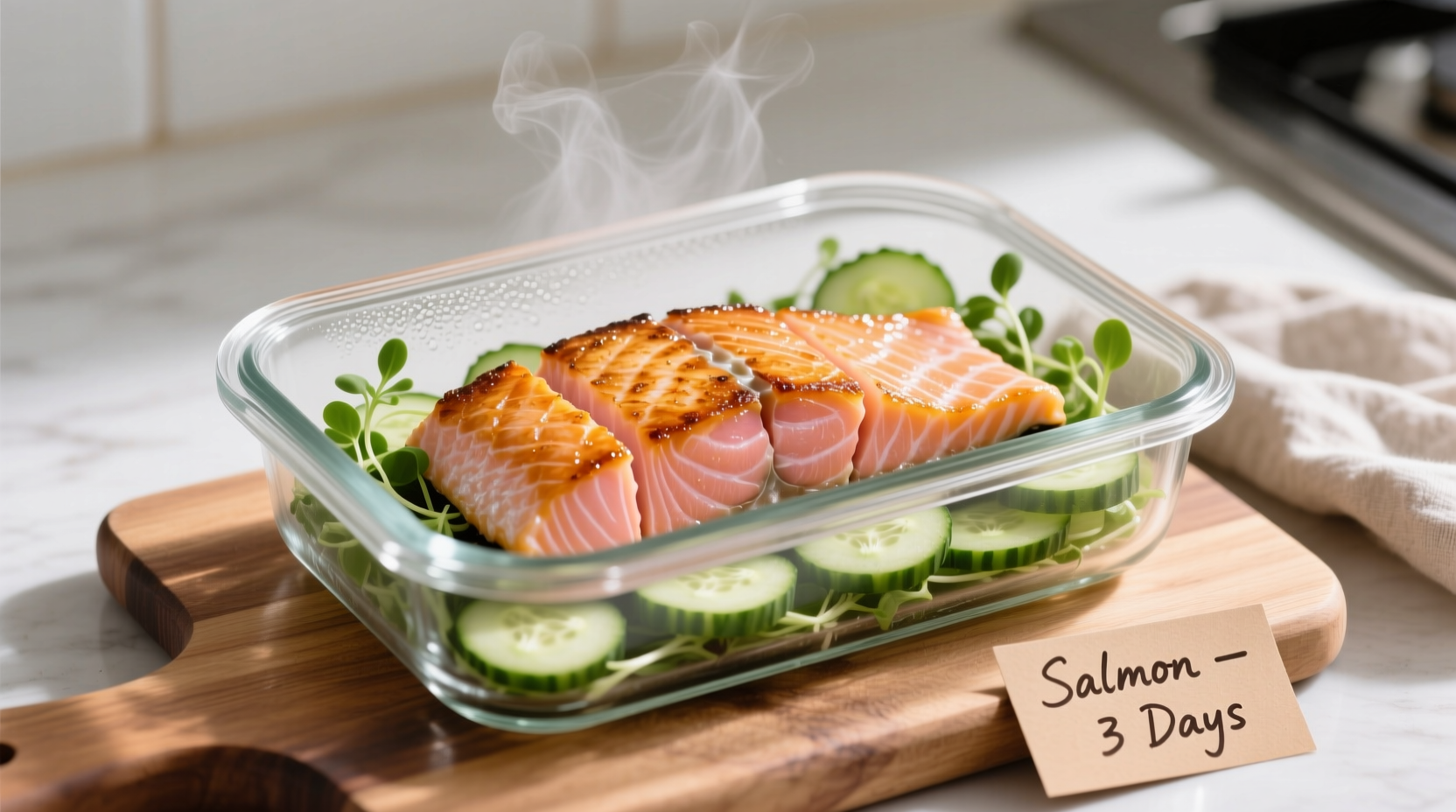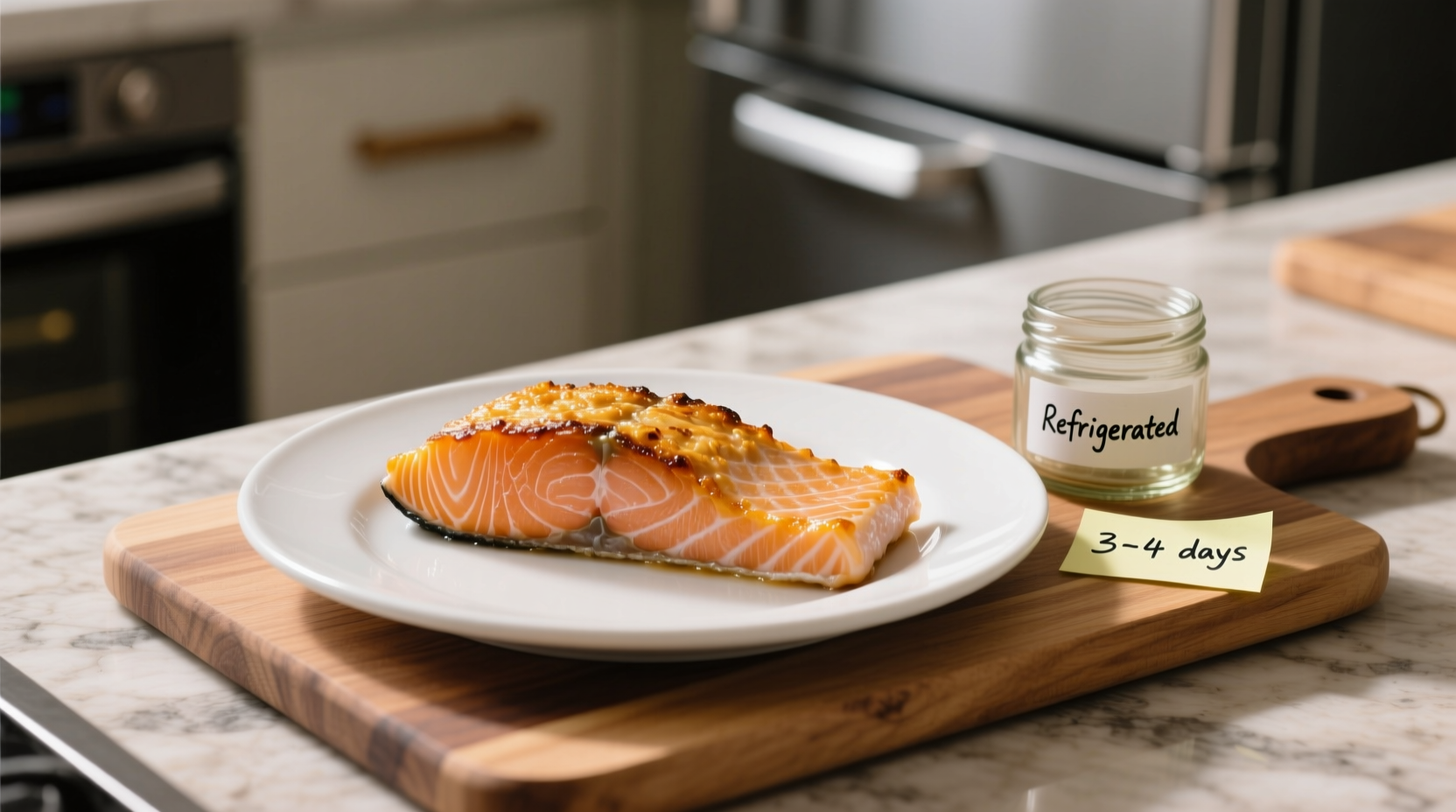Ever cooked a beautiful salmon fillet only to wonder how long you can safely keep those leftovers? You're not alone. Millions of home cooks face this exact question every week, and getting it wrong could mean wasting food or worse—risking food poisoning. Let's cut through the confusion with science-backed storage guidelines you can trust.
The Critical 3-4 Day Safety Window
According to the USDA Food Safety and Inspection Service, cooked salmon maintains both safety and quality for 3-4 days in the refrigerator when stored correctly. This isn't arbitrary—it's based on bacterial growth studies showing exponential increases in pathogens like Listeria after the 96-hour mark.
| Storage Method | Refrigerator (40°F/4°C) | Freezer (0°F/-18°C) |
|---|---|---|
| Cooked Salmon | 3-4 days | 4-6 months |
| Raw Salmon | 1-2 days | 3-8 months |
Why Salmon Has a Shorter Shelf Life Than You Think
Fish like salmon presents unique storage challenges compared to other proteins. Its high fat content and delicate structure create ideal conditions for bacterial growth. The FDA Food Code identifies seafood as particularly vulnerable due to:
- Rapid temperature transition requirements (must cool from 140°F to 70°F within 2 hours)
- Higher moisture content attracting bacteria
- Sensitive fatty acids that oxidize quickly
Unlike chicken or beef, salmon doesn't give obvious visual warnings when it begins to spoil. That's why strict time limits matter more than "sniff tests" for fish safety.
Proper Storage Techniques That Actually Work
How you store cooked salmon directly impacts whether it lasts 3 days or spoils in 2. Follow these chef-tested methods:
Cooling Down Correctly (The Most Critical Step)
Never place hot salmon directly in the refrigerator. This raises the internal temperature of your fridge, creating a danger zone for all foods. Instead:
- Transfer cooked salmon to a shallow container (no deeper than 2 inches)
- Cover loosely with parchment paper for 20-30 minutes at room temperature
- Refrigerate within 2 hours of cooking (1 hour if room temperature exceeds 90°F)
Optimal Container Selection
Air exposure accelerates spoilage through oxidation. Use one of these methods:
- Air-tight glass containers with locking lids
- Reusable silicone bags with complete air removal
- Plastic wrap pressed directly against the salmon surface

How to Spot Spoiled Salmon Before It Spots You
While the 3-4 day rule is your primary safety guide, always perform these checks before consuming:
| Fresh Cooked Salmon | Spoiled Cooked Salmon |
|---|---|
| Moist but not slimy texture | Slippery or sticky surface |
| Mild ocean-like aroma | Strong ammonia or sour smell |
| Firm, flaky texture | Mushy consistency |
| Consistent pink-orange color | Grayish tinge or discoloration |
When in doubt, throw it out. FoodSafety.gov emphasizes that "pathogens that cause foodborne illness don't always produce obvious signs"—so don't rely solely on smell tests for seafood.
Extending Freshness: When and How to Freeze
If you won't eat your salmon within 3 days, freezing preserves both safety and quality:
- Best practice: Freeze within 24 hours of cooking for optimal texture
- Wrapping method: Double-wrap in plastic wrap then aluminum foil
- Portioning: Divide into single-serving sizes before freezing
- Thawing: Refrigerate overnight—never thaw at room temperature
The USDA confirms properly frozen cooked salmon maintains peak quality for 4-6 months. Beyond this, while still safe, texture and flavor deteriorate noticeably.
Common Storage Mistakes That Shorten Shelf Life
Even with good intentions, these errors compromise your salmon's safety:
- Storing in the fridge door: Temperature fluctuations reduce shelf life by 30%
- Using takeout containers: Most aren't truly airtight—transfer to proper containers
- Reheating multiple times: Each cycle degrades quality and increases risk
- Placing near the back wall: Coldest spots cause freezer burn on edges
Special Considerations for Different Salmon Types
Not all salmon storage is equal. Consider these factors:
- Farmed vs wild: Wild salmon's lower fat content may reduce shelf life by 12-24 hours
- Pre-marinated: Acidic marinades (lemon, vinegar) can accelerate texture breakdown
- Cold-smoked: Follow specific smoked salmon storage guidelines (typically 5-7 days)
- Leftover salmon dishes: Casseroles with dairy may have shorter shelf life (2-3 days)
For meal-prepped salmon bowls, the USDA recommends consuming within 3 days regardless of other ingredients' longevity. The fish remains the most perishable component.
Reheating Leftover Salmon Safely
Proper reheating preserves both safety and quality:
- Remove from refrigerator 15 minutes before reheating
- Use low-temperature methods: oven (275°F) or steam
- Heat only to 145°F internal temperature
- Consume immediately—don't re-refrigerate reheated salmon
Microwaving often dries out salmon. If using a microwave, cover with damp paper towel and use 30-second intervals at 50% power.
When Food Safety Guidelines Change
Food storage recommendations evolve with new research. The current 3-4 day guideline for cooked fish was established in the 2020 FDA Food Code update, which incorporated:
- Improved temperature monitoring technology
- More precise bacterial growth modeling
- Real-world refrigerator temperature studies
Always check for updates from authoritative sources like FoodSafety.gov, as recommendations may change with new scientific evidence.











 浙公网安备
33010002000092号
浙公网安备
33010002000092号 浙B2-20120091-4
浙B2-20120091-4